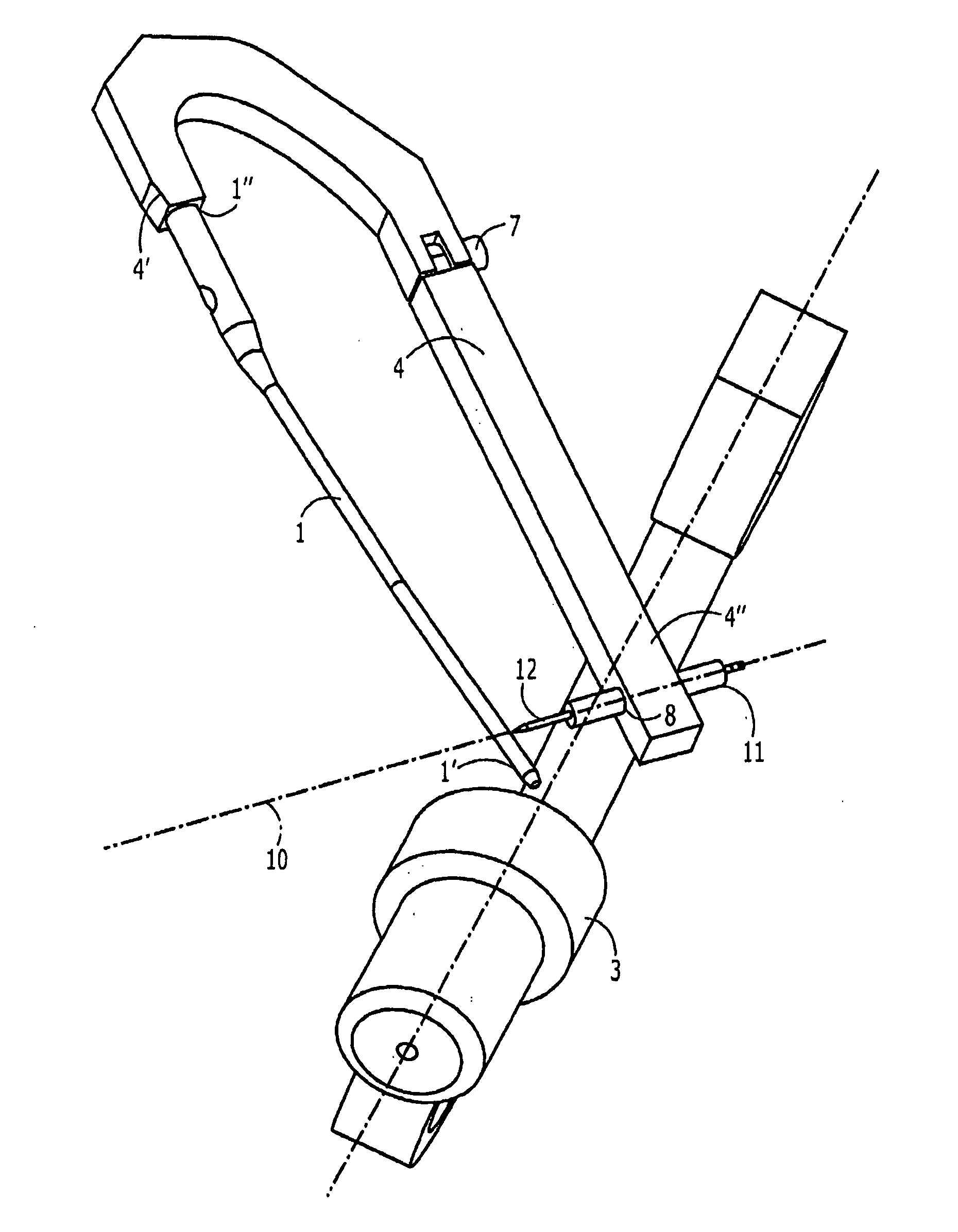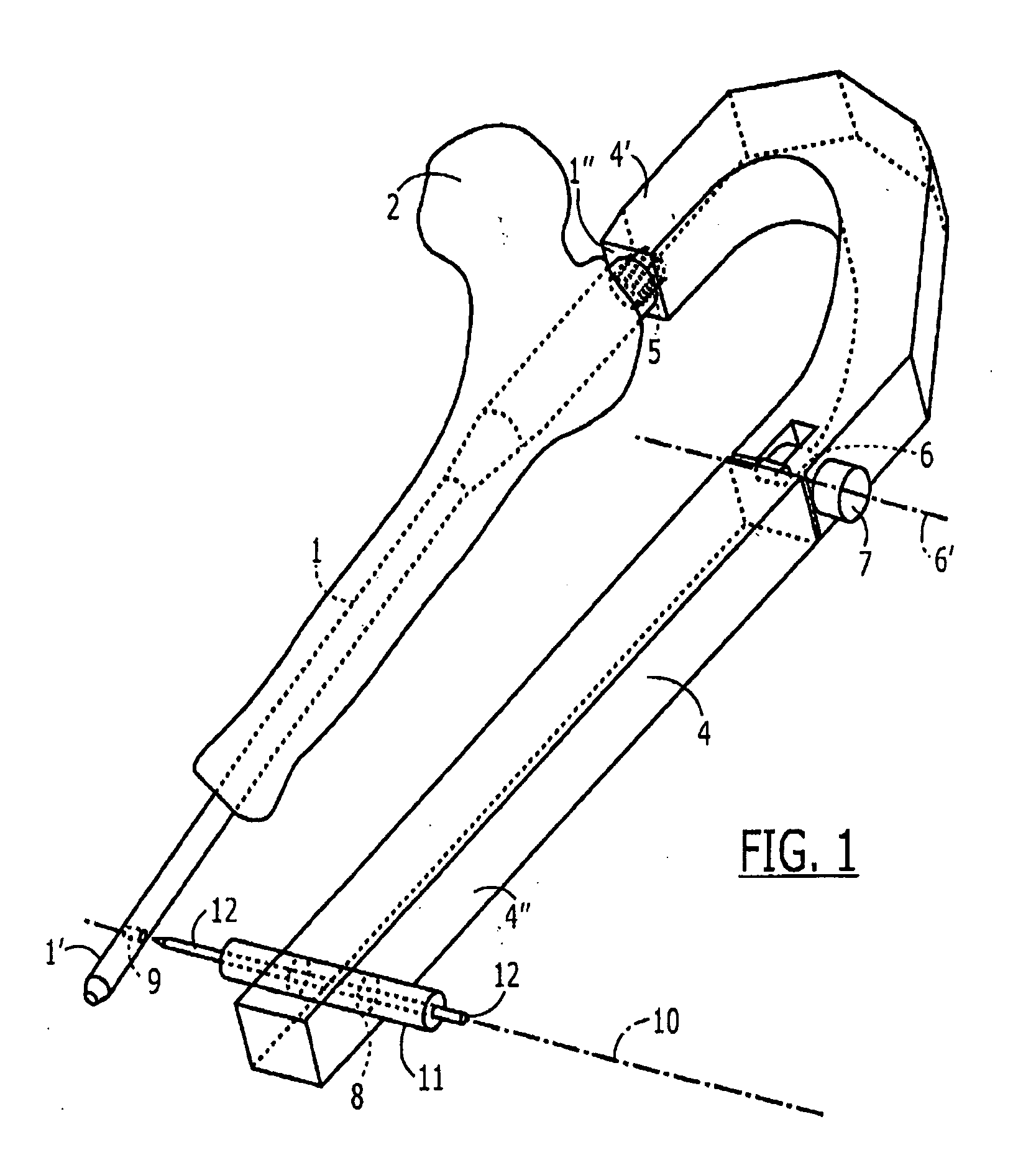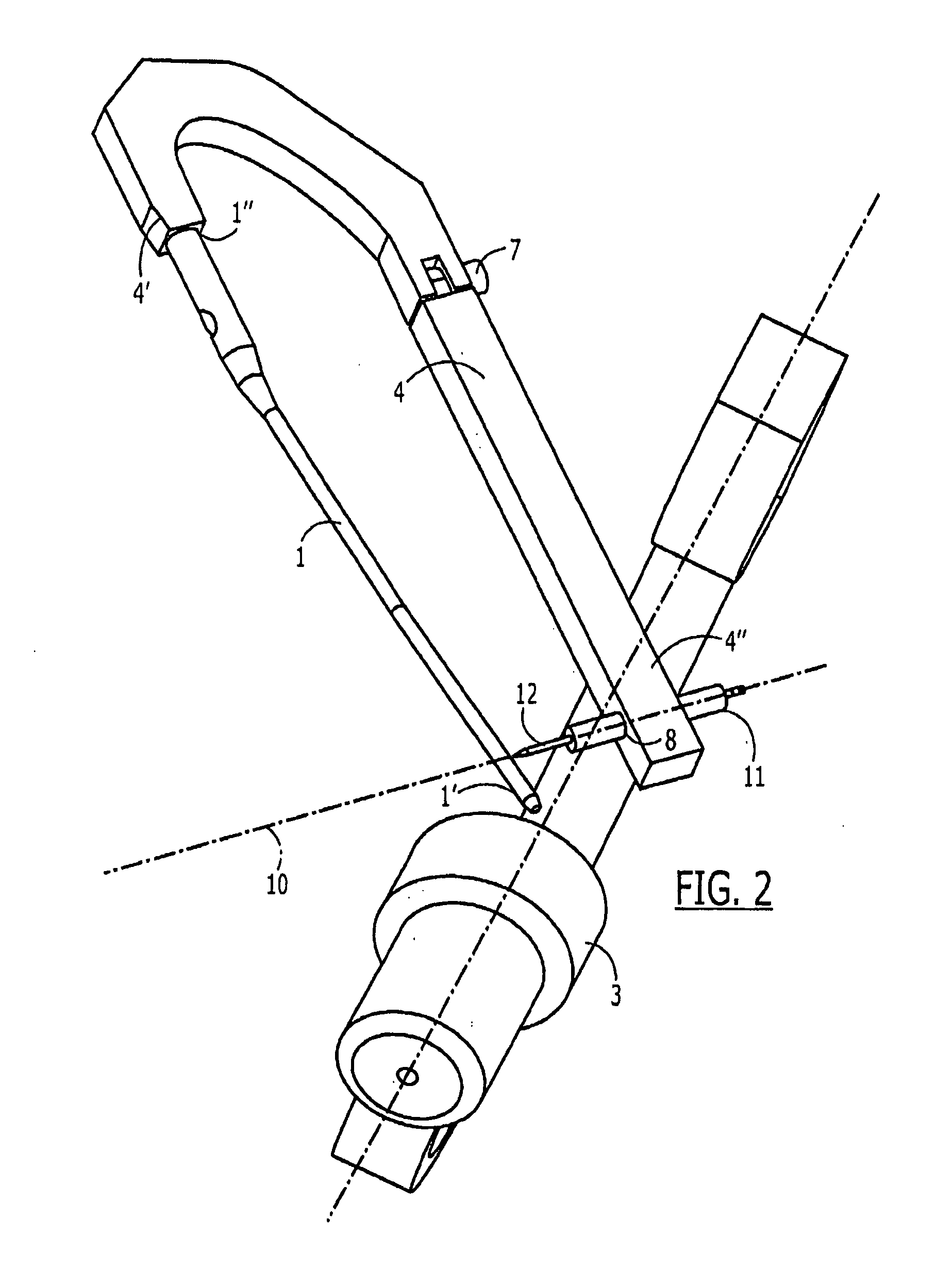Aiming Arm for Locking of Bone Nails
a technology for locking bones and nails, applied in bone drill guides, medical science, surgery, etc., can solve the problems of difficult x-ray technicians, difficult to accurately align the distal screw holes, and sometimes not even possible, so as to facilitate the targeting and installation of screws, accurately and reliably
- Summary
- Abstract
- Description
- Claims
- Application Information
AI Technical Summary
Benefits of technology
Problems solved by technology
Method used
Image
Examples
Embodiment Construction
[0025]The present invention may be further understood with reference to the following description and the appended drawings, wherein like elements are referred to with the same reference numerals. The present invention relates generally to methods and devices for the stabilization and fixation of fractured bones and bone fragments. Specifically, the present invention relates to methods and devices for the stabilization and / or fixation of long bones through the insertion of a stabilizing member longitudinally thereinto. For example, the present invention relates to the placement and fixation of an intramedullary nail within the medullary canal of a long bone such as the femur, humerus, tibia, etc. However, those skilled in the art will understand that the present invention may be employed in stabilizing any long bone through the insertion into a medullary canal thereof of an intramedullary member. Thus, the discussion of this invention in regard to the stabilization of a femur with a...
PUM
 Login to View More
Login to View More Abstract
Description
Claims
Application Information
 Login to View More
Login to View More - R&D
- Intellectual Property
- Life Sciences
- Materials
- Tech Scout
- Unparalleled Data Quality
- Higher Quality Content
- 60% Fewer Hallucinations
Browse by: Latest US Patents, China's latest patents, Technical Efficacy Thesaurus, Application Domain, Technology Topic, Popular Technical Reports.
© 2025 PatSnap. All rights reserved.Legal|Privacy policy|Modern Slavery Act Transparency Statement|Sitemap|About US| Contact US: help@patsnap.com



